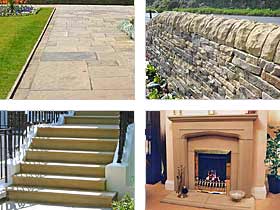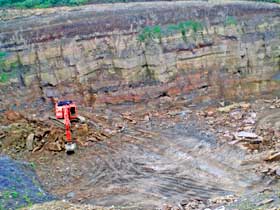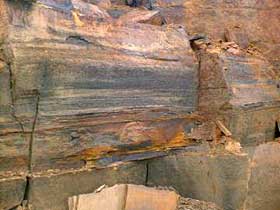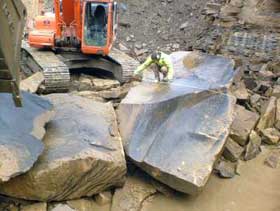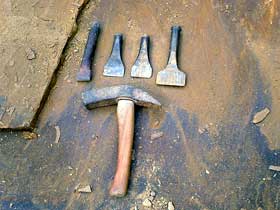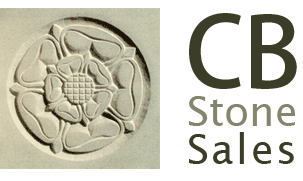What is Yorkstone?
Yorkstone is a natural sandstone of very high quality, strength and durability which comes from quarries in West Yorkshire. It is perhaps best known for its use as a paving stone and has been used to pave most of the major towns and cities in the UK. The traditional London paving stone is yorkstone. Yorkstone, which is also known as york stone or Yorkshire stone is also widely used in the construction and building industries and in DIY and gardening projects. As well as paving for footpaths, patios and driveways, it is used for walling, stone steps, indoor flooring, rockery gardens, and carved ornaments and garden sculptures.
From prehistoric deposits to quarried stone
Yorkstone is sedimentary sandstone formed over 300 million years ago in the Carboniferous period as silt deposited by rivers, and consists of quartz, mica, feldspar, silica, clay and iron oxides. It was first quarried in Yorkshire in medieval times and by the 18th century a large industry had developed quarrying the yorkstone of the millstone grit and coal measures in West Yorkshire. The first quarries or ‘delves’ were developed in the outcrop on the valley sides and later began to move underground into large chambers or galleries. Deep yorkstone quarries and mines became possible after the introduction of gins and steam cranes and the earliest shafts were sunk in Hipperholme, close to Halifax in about 1860.
Yorkstone: versatile and durable
Initially the stone was used in Yorkshire for walling, and the traditional local skill of building dry stone walls using yorkstone continues to this day. Another early use was for roofing, made from split stones known locally as thackstone or grey slate. Yorkstone’s fame really took off with the need to pave the rapidly expanding towns and cities of the industrial revolution. Its versatility and durability led to its use in a huge range of building projects from footpaths, roads and dry stone walling to churches, cathedrals, bridges, houses and intricately carved monuments.
Types of yorkstone
The sandstone blocks used for making yorkstone products are separated into two categories. One has highly visible sedimentary layers and is used for riven paving and other riven yorkstone products. The term ‘riven’ comes from riving (splitting) the block apart. This block is referred to as flagrock or flagblock.
The second kind of block is more compressed, and the sedimentary layers are not as visible and cannot be riven apart. This type of block is referred to as ashlar block and is used for sawn yorkstone products such as sawn paving and sawn slabs for masonry work and for garden statues and sculptures.
Stone for rockeries
Other layers in the yorkstone quarry include cross-bedded sandstone that cannot be used for paving or sawing due to its shape These are often loose layers and are used for making rockery garden pieces and dry stone walling. Another layer is made up of hard shale blocks called rag blocks which are also used for garden rockeries and water features. Clay, mudstone, siltstone and soft shale make up the rest of the layers in a yorkstone quarry.
Yorkstone colours
The colour of yorkstone depends on the minerals within its makeup and differs from quarry to quarry. Quarried blocks are rusty red to brown in colour on the outside and are usually a sandy yellow colour on the inside. This sandy colour can clearly be seen on the inside of the blocks when they are sawn into yorkstone slabs or riven into yorkstone paving. Orange bands known as concretion lines can also be seen on the inside of the blocks when exposed with sawing or riving.
Traditional skills at the quarry
The quarrymen who ‘work’ the yorkstone are known as Delvers. Delph, Delf or Delvers comes from the Anglo Saxon word ‘delfan’ which means to dig. The early yorkstone quarries were smaller than those today and were called delphs. Some areas, street names and buildings in Yorkshire still have the name delph or delver. The ‘Delvers Arms’ public house, ‘Delvers Cottage’ and ‘Delph Hill’ are just a few examples.
Comment on this article
About Yorkstone: Article 1
